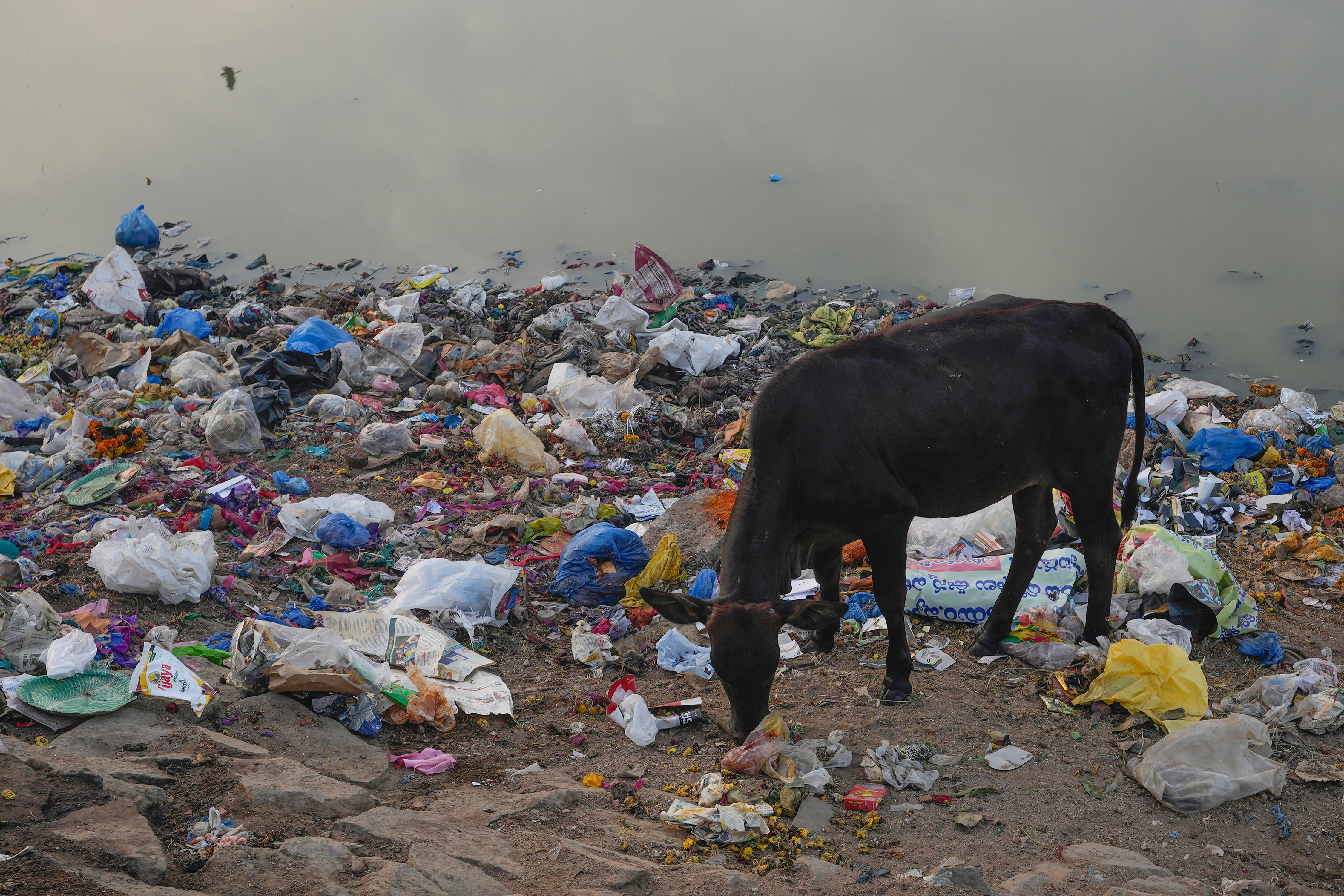Our Terms & Conditions | Our Privacy Policy
India unveils plans to use cow dung as fuel for vehicles. But is it really a green alternative?
On The Ground newsletter: Get a weekly dispatch from our international correspondents
Get a weekly dispatch from our international correspondents
Get a weekly international news dispatch

India is gearing up to use cow dung to power vehicles in a move officials say will cut emissions, create rural jobs, and turn a waste problem into an energy source.
The plan, launched in Uttar Pradesh, the country’s most populous state, is to process around 5.4 million kg of dung from stray cattle each day into compressed biogas (CBG). Experts estimate methane from a single cow’s annual dung output can match the energy of about 225 litres of petrol, enough to run a small car for roughly 5,500km once purified.
CBG is produced through anaerobic digestion, a process that breaks down organic matter in sealed tanks without oxygen to release biogas, which is typically around half methane. It is then upgraded by removing carbon dioxide and water vapour to create CBG, chemically similar to compressed natural gas and suitable for the same engines. The by-product, known as digestate, can be used as an organic fertiliser.
The environmental benefit depends on how the fuel is sourced and processed. If the methane comes just from dung already being produced by existing cattle, capturing it prevents a potent greenhouse gas from escaping into the atmosphere while replacing fossil-derived fuel. But if demand for dung leads to breeding more cattle, the extra methane from livestock could offset much of the benefit.
Producing CBG releases its own emissions: dung needs to be collected and transported, digesters require power to operate, and the gas must be upgraded to vehicle grade. The net climate impact depends on how these compare with emissions from extracting and processing fossil gas.
While this is the first time Uttar Pradesh is attempting methane production from cow dung on a large scale, the concept is not new to India.
Gujarat has been running similar projects for years now. Banas Dairy operates a 40-tonne-per-day facility producing almost 300 tonnes of CBG annually. The leftover slurry is sold to farmers as organic fertiliser at about a third the cost of subsidised chemical alternatives.
The western state plans to install more than 20 new CBG plants and 30,000 household biogas units under its renewable energy strategy.
India’s central government has been promoting biogas through a scheme called Sustainable Alternative Towards Affordable Transportation, or SATAT.
The scheme, launched in 2018, offers assured purchase of CBG by oil marketing companies. The aim is to set up 5,000 plants nationwide by 2025 but progress remains uneven due to high upfront costs, logistical challenges in collecting feedstock, and the need for skilled plant operators.
 A cow looks for food by a polluted pond in Hyderabad, India, on 26 November 2024 (AP)
A cow looks for food by a polluted pond in Hyderabad, India, on 26 November 2024 (AP)
For Uttar Pradesh, the economic potential is significant if the supply chain works. The 2019 Livestock Census recorded just over 19 million cattle, including more than 6.2 million milch cows, 2.3 million dry cows and 1.18 million stray cattle, in the northern state. The majority of the cattle roam freely on roads and in public spaces, where their waste often accumulates untreated. Reliable dung collection could help tackle both the state’s energy needs and its waste management challenge.
If successful, officials say the state’s output will feed both rural fuel networks and urban CNG stations, reducing reliance on imported natural gas and cutting fossil fuel emissions.
Shyam Bihari Gupta, chairperson of the Uttar Pradesh cow service commission, said the fuel could also be used for cooking in rural homes and heating in small industries.
“Methane farming can become an alternative to fossil fuels in future,” said Dr Anurag Srivastava, officer on special duty at the commission.
The state is betting heavily on biogas, allocating £70m to bioenergy projects between 2022 and 2027 as well as offering subsidies, land and other incentives. It leads the country in upcoming CBG capacity, with 128 projects in various stages of development, including 15 operational plants.
It has already opened its first bio-CNG plant in the Prayagraj area, with larger facilities planned in Barsana and other districts. The government says these projects form part of its “waste to wealth” initiative, aimed at turning agricultural and livestock residues into marketable resources.
Images are for reference only.Images and contents gathered automatic from google or 3rd party sources.All rights on the images and contents are with their legal original owners.



Comments are closed.